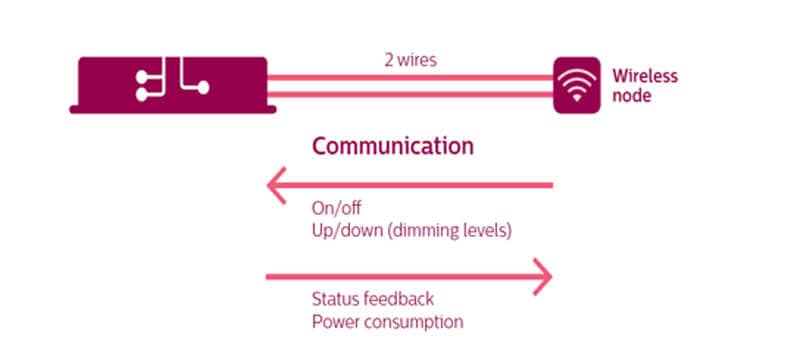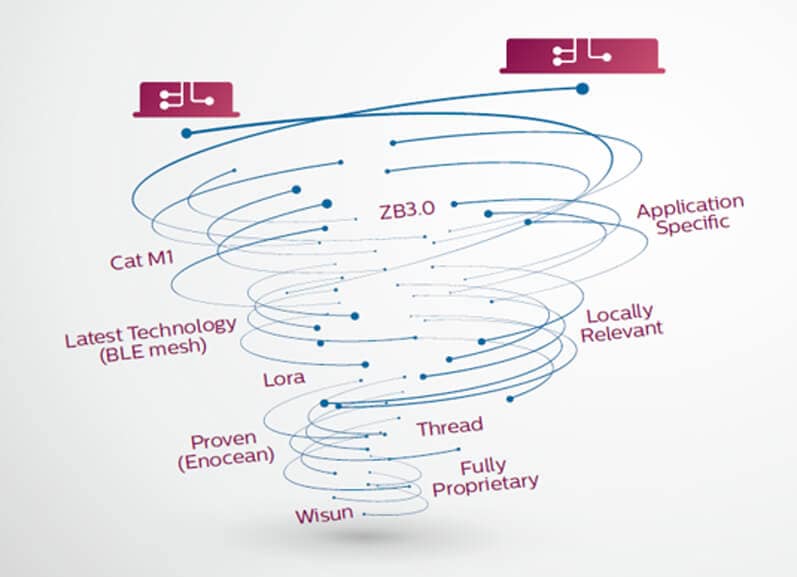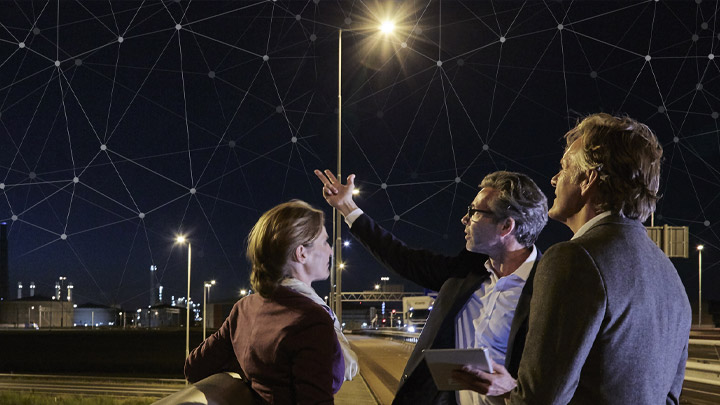We all know that lighting can be adjusted in many ways – from daylight dimming to task tuning via manual or scheduled controls. But while it’s useful to match lighting to different personal preferences, it’s even more useful to understand how different settings create energy savings, especially when lighting accounts for as much as 18% of a building’s energy consumption1.
1 Source: https://constructioninformer.com/let-occupants-lower-commercial-building-lighting-costs/
Fortunately, it’s now possible to obtain these valuable insights through wireless lighting controls. This emerging technology is helping customers uncover their consumption patterns for the first time in order to establish more sustainable uses of energy and realize substantial savings.
How can lights be controlled wirelessly?
Connected lighting is all about two-way data communications: Wireless lighting controls with bidirectional connectivity can both send and receive data from luminaires.
When combined with lighting management software, connected lighting systems enable people to see the current state of each lightpoint, and to act on lightpoints individually or in groups to monitor, manage, and maintain lighting systems in real time.

What about all the different wireless protocols?
To simplify things for everyone, rather than creating yet another custom interface, Signify has pioneered a standard protocol between the LED driver and the wireless controller. This eliminates the need for specialized devices, connections or connectivity, while providing full support for today’s wireless protocols.
With Advance Xitanium SR (sensor-ready) LED drivers, fixture manufacturers can create new luminaires with confidence that their products will reliably connect to sensors and the Internet of Things, bringing forward more sustainable, smart lighting to the planet.


Global Product Manager
Signify

Getting streetwise about outdoor lighting
Street lights come in a range of form factors from but despite all their differences, they have one thing in common: they can all be controlled wirelessly.

Human-centric lighting: are you ready to ride the wave?
The SR standard now includes a standardized protocol for tunable white light, allowing it to be controlled wirelessly.

Let’s play component roulette
City authorities drove one of the fastest technology shifts when they upgraded street lighting to LED. Can digital fingerprints solve this problem?